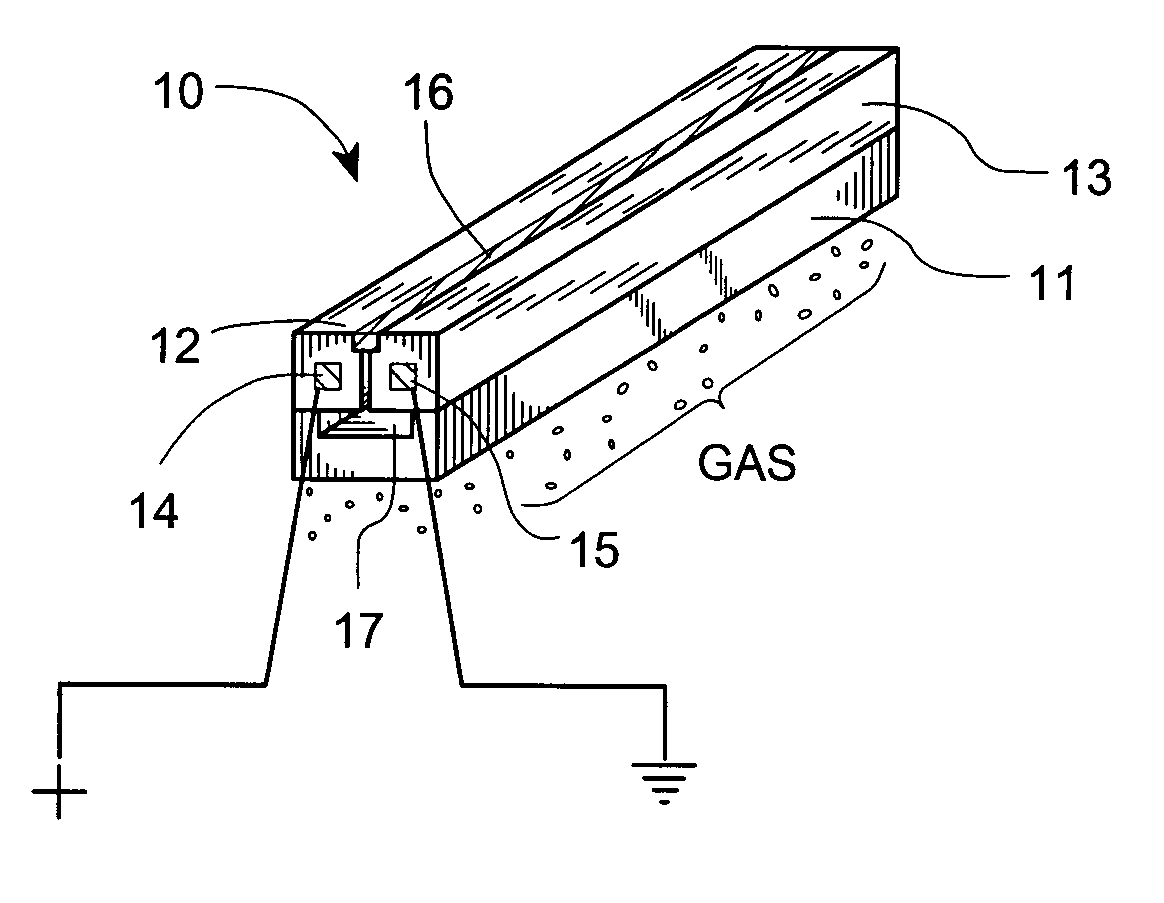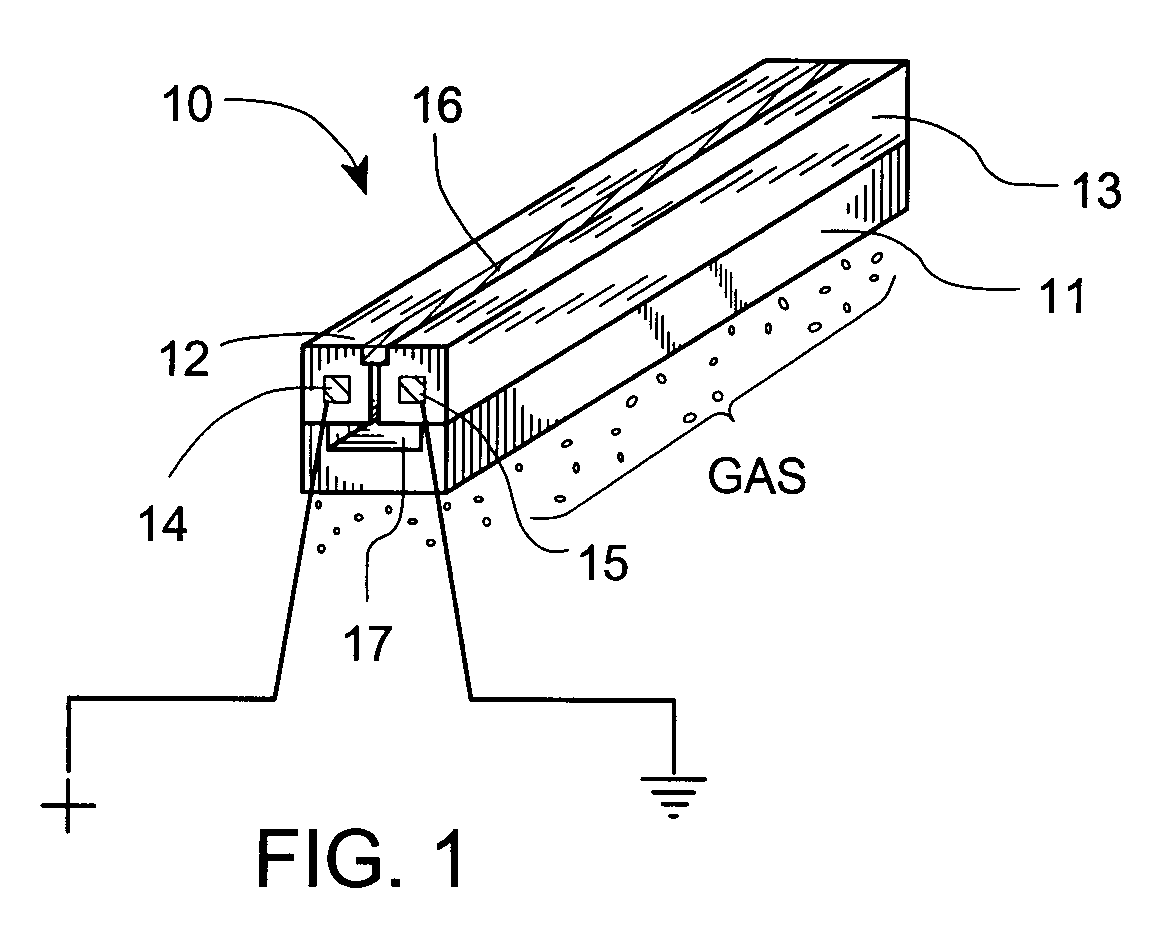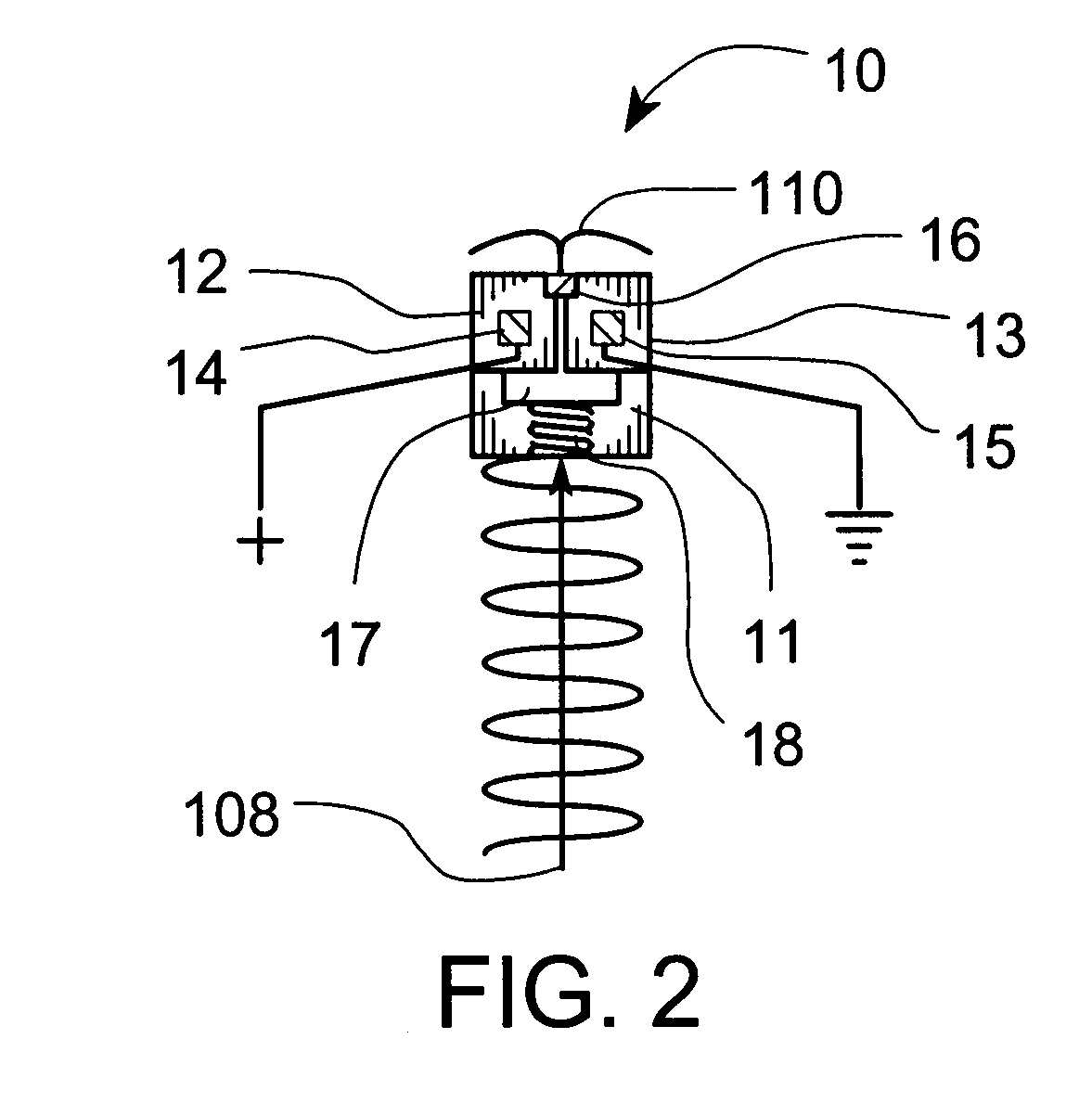Method and Apparatus for Applying Material to Glass
a technology of glass and material, applied in the direction of coating, chemical vapor deposition coating, plasma technique, etc., can solve the problems of limiting conditions, vacuum vessels are not practical for high-speed treatment of large glass objects such as windshields, and cannot meet the requirements of high-speed glass treatment. , to achieve the effect of reliable adhesion of materials to glass, the effect of reducing the number of steps
- Summary
- Abstract
- Description
- Claims
- Application Information
AI Technical Summary
Benefits of technology
Problems solved by technology
Method used
Image
Examples
Embodiment Construction
[0040] A method embodying features of the present invention includes the steps of applying atmospheric plasma to the surface in order to clean and functionalize the surface, applying a film of polymerizable fluid to the surface; and curing the film with high-energy radiation. The plasma treatment cleans the glass surface by removing contaminates. The plasma treatment functionalizes by creating reactive species on the surface, such as free radicals, cations, or anions that will bind to the top coating and by creating oxygenated groups such as hydroxyl, carboxyl or carbonyl.
[0041] Steady-state glow-discharge atmospheric plasma is applied with a plasma head such as described hereinafter. The plasma head is positioned at a selected distance from the glass surface and directed to emit plasma towards the glass surface. The nominal selected distance is about 0.25 inch with a maximum preferred distance of about 0.5 inch. The plasma head is maintained at the selected distance from the glass ...
PUM
| Property | Measurement | Unit |
|---|---|---|
| thickness | aaaaa | aaaaa |
| thickness | aaaaa | aaaaa |
| distance | aaaaa | aaaaa |
Abstract
Description
Claims
Application Information
 Login to View More
Login to View More - R&D
- Intellectual Property
- Life Sciences
- Materials
- Tech Scout
- Unparalleled Data Quality
- Higher Quality Content
- 60% Fewer Hallucinations
Browse by: Latest US Patents, China's latest patents, Technical Efficacy Thesaurus, Application Domain, Technology Topic, Popular Technical Reports.
© 2025 PatSnap. All rights reserved.Legal|Privacy policy|Modern Slavery Act Transparency Statement|Sitemap|About US| Contact US: help@patsnap.com



